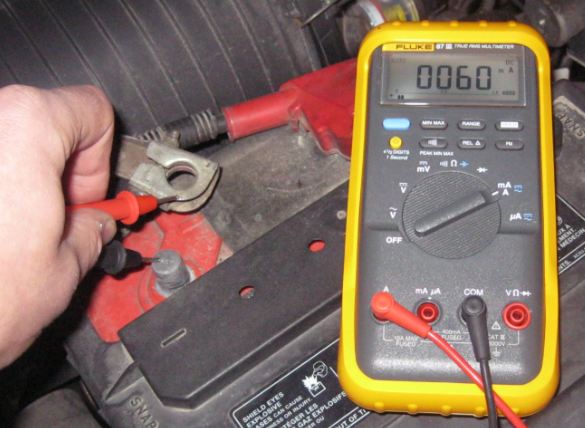Pin on car stuff
Table of Contents
Table of Contents
Are you having trouble with your car battery draining too quickly? It might be a parasitic draw causing the issue. Parasitic draw is when there is an electrical load on the battery even when the vehicle is turned off, causing the battery to drain over time. In this blog post, we’ll cover how to check for parasitic draw in your car and solve the issue.
Dealing with a dead car battery can be a frustrating experience, especially if it happens frequently. Not only does it cause inconvenience, but it can also be costly to replace your battery frequently. It’s essential to identify the problem and resolve it as soon as possible.
To check for parasitic draw, you will need a multimeter, a digital or analog device that measures electrical voltage and resistance. Follow these six steps to detect parasitic draw:
Step 1: Turn Off the Car
Make sure the keys are turned off, and the car is not running. Also, ensure that all car doors are shut, including the hood, the rear door, and the trunk.
Step 2: Disconnect the Negative Battery Cable
Access the battery, usually located in the engine bay, and disconnect the negative battery cable. A parasitic draw discharges the battery’s electrical energy, so it’s essential to disconnect the battery before proceeding to avoid electrocution or short-circuiting the battery.
Step 3: Connect the Multimeter
Place the multimeter to measure DC voltage in the range of 20V or 50V, depending on the multimeter’s specifications. Connect the multimeter’s ground or black wire to the negative battery cable and the red wire to the negative battery post.
Step 4: Wait for the Initial Reading
Wait for at least fifteen minutes for the electrical system’s residual charge to dissipate, giving an accurate reading. The initial reading or the resting voltage should be between 12.4 and 12.7 volts.
Step 5: Check the Voltage Reading
While keeping an eye on the multimeter, start removing one fuse at a time, noting if the reading changes. If the voltage drops below 12.4 volts, that indicates the flow of current, which implies a parasitic draw. Narrow down which fuse leads to the drop in voltage by removing each one.
Step 6: Locate the Parasitic Draw
Once you’ve located the fuse that leads to the parasitic draw, find its circuit by referring to the vehicle’s manual. Check each component in the specific circuit for current flow or signs of damage. If you find a damaged component, replace it. If not, take it to a professional mechanic for further assistance.
What Causes a Parasitic Draw?
A parasitic draw can happen due to several reasons, such as leaving lights on or an electrical component that doesn’t turn off, like a radio or power window. Other possible causes include a faulty switch or wiring issues. Identifying the root cause can help prevent future parasitic draws.
The Importance of Regular Maintenance
Regular car maintenance prevents potential issues that could lead to parasitic draws. Be sure to check your car’s electrical components regularly, such as the battery, alternator, and starter, to ensure they’re in working order. A malfunctioning component can cause parasitic draw.
Prevention is Better than Cure
The best way to avoid parasitic draw is to drive the car regularly or keep it connected to a trickle charger when not in use. Turning off all electrical components before shutting off the engine can prevent future parasitic draws.
Remember to Disconnect the Negative Cable Once You’re Done
After checking for parasitic draw, reconnect the fuses and terminals, and ensure everything is secure. Don’t forget to reconnect the negative battery cable and make sure it’s tightened. This step prevents draining the battery when the vehicle is sitting unused for some time.
Conclusion of How to Check for Parasitic Draw
Checking for parasitic drain is a simple process that requires a multimeter and some patience. Ensure that you strictly follow the steps and use safety measures to prevent electrocution or short-circuiting your battery.
Question and Answer
Q: How long does a battery last with parasitic draw?
A: Parasitic draws can cause a battery to discharge in as little as two days.
Q: How much amperage is considered a parasitic draw?
A: A parasitic draw greater than 50 milliamps (0.050 amp) is considered abnormal.
Q: How do I know if my car has parasitic draw?
A: The easiest way to test for parasitic draw is to disconnect the negative battery cable and check the voltage reading after waiting for fifteen minutes.
Q: Can I measure parasitic draw with a digital multimeter?
A: Yes, digital multimeters typically come with DC voltage measurements that can help check for parasitic draws.
Gallery
Pin On Ford Quick Tips

Photo Credit by: bing.com / parasitic thewikihow
What Is “normal” For A Parasitic Draw? | OPTIMA Batteries

Photo Credit by: bing.com / battery draw parasitic car normal 12v test multimeter testing optimabatteries vehicle troubleshooting common key 2010 does dying keep batteries using
PARASITIC CURRENT DRAW TEST PERFORMANCE - YouTube

Photo Credit by: bing.com / draw parasitic
Pin On Car Stuff

Photo Credit by: bing.com /
Parasitic Draw Battery Test - The Ranger Station

Photo Credit by: bing.com / parasitic multimeter took therangerstation





